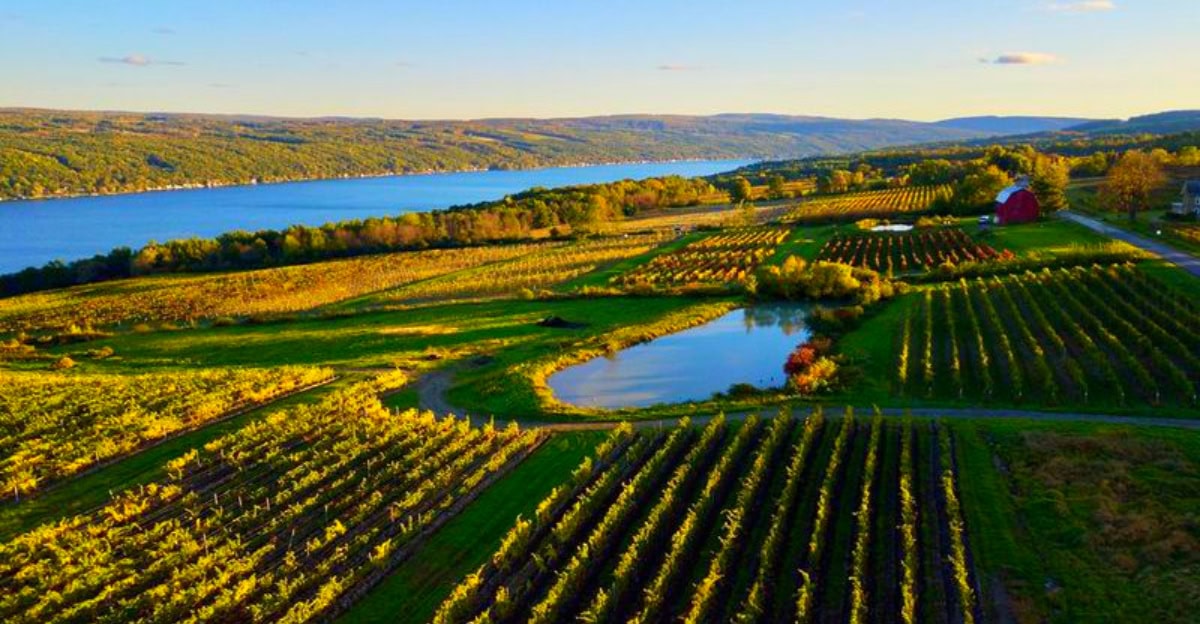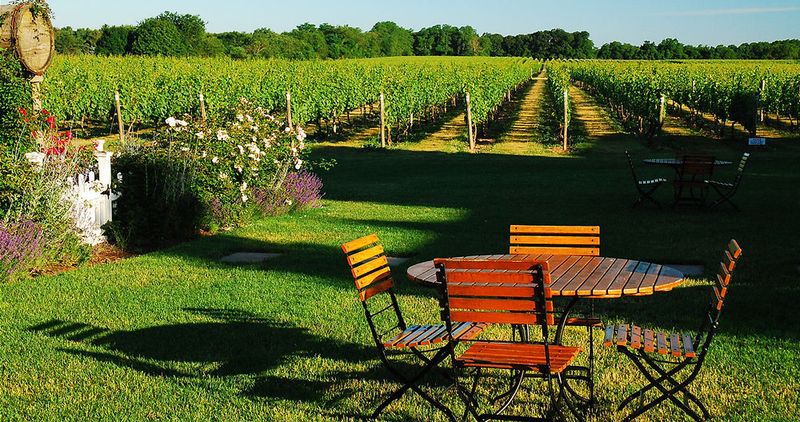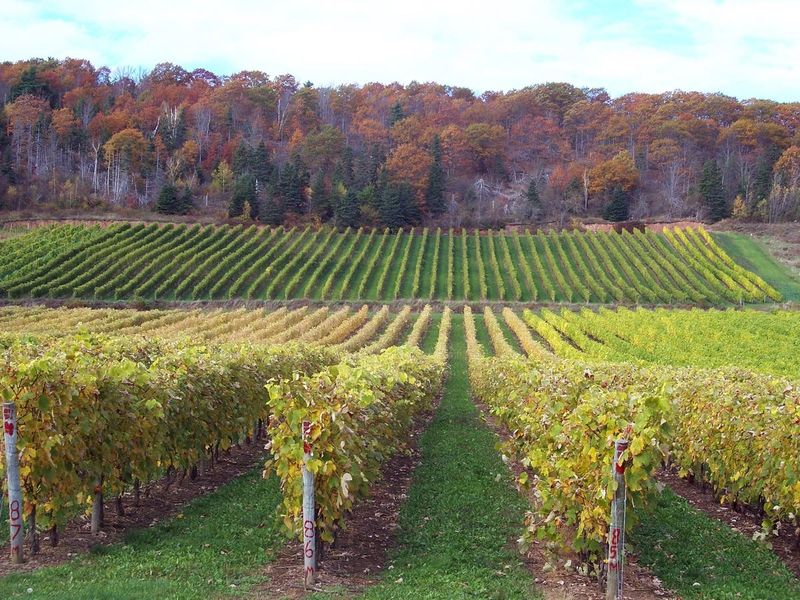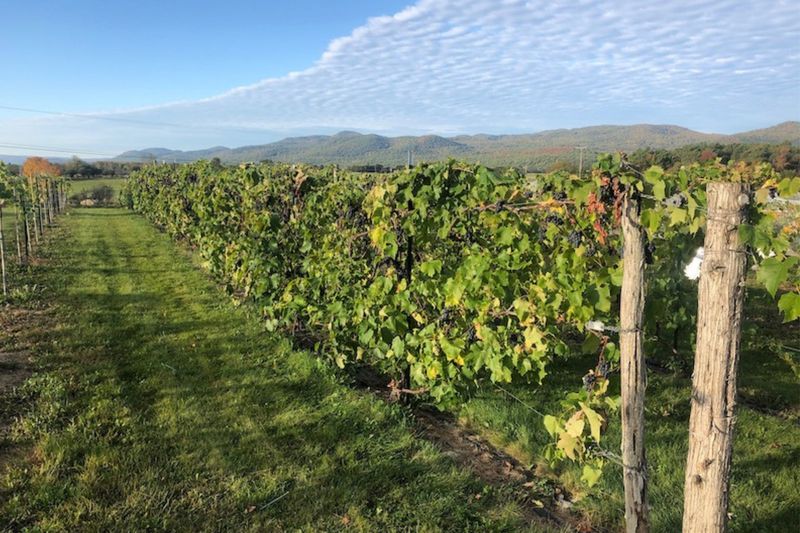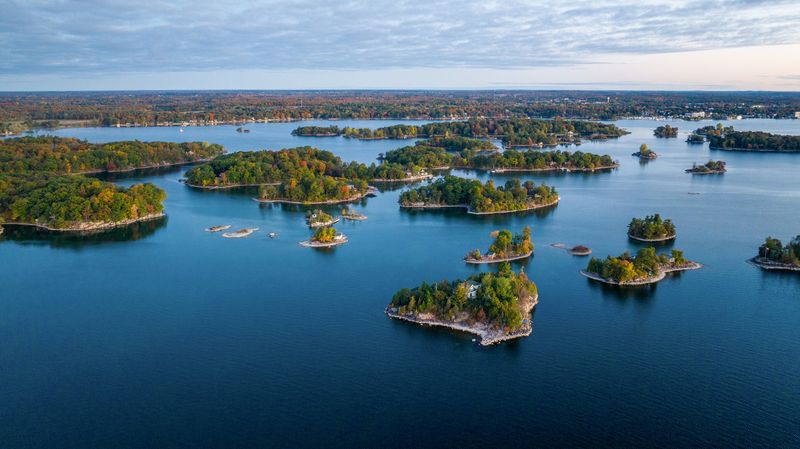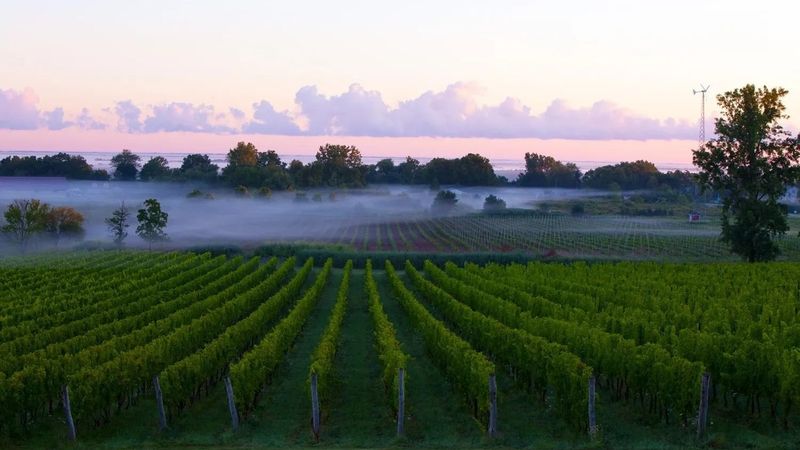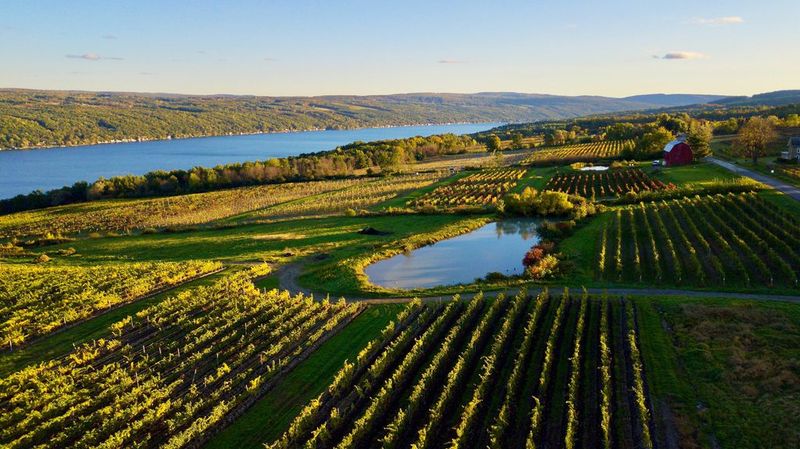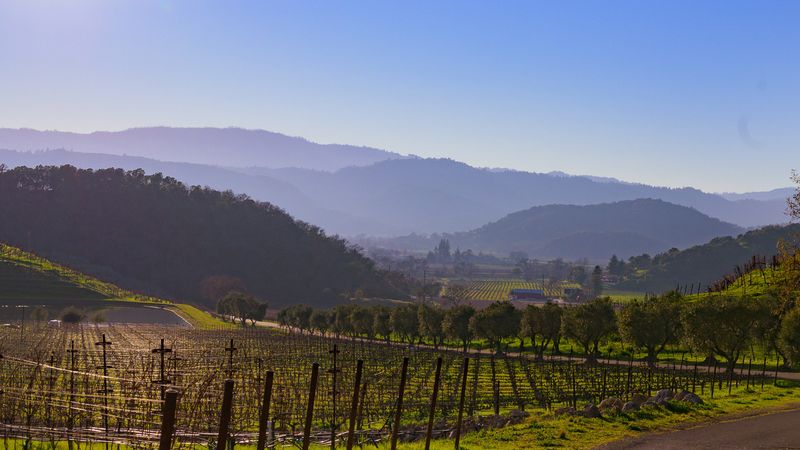Explore the hidden gems of New York’s wine country, where diverse terroirs and innovative winemakers craft distinctive wines that challenge the fame of California’s Napa Valley. From the cool-climate Rieslings of the Finger Lakes to the maritime-influenced reds of Long Island, these eight regions showcase the rich variety and pioneering spirit of New York’s burgeoning wine scene.
1. Long Island’s North Fork: Bordeaux on the Atlantic
Just two hours from New York City, Long Island’s North Fork is a sophisticated wine destination. The maritime breezes create an ideal climate for Bordeaux-style reds like Merlot and Cabernet Sauvignon. Over 40 wineries offer unique farm-to-table experiences, pairing local oysters and cheeses with their wines. Iconic producers such as Bedell Cellars and Paumanok Vineyards have garnered critical acclaim. North Fork’s boutique wineries stand out for their focus on community, sustainability, and terroir-driven wines with a distinct Atlantic character. This region’s dedication to craftsmanship offers a refreshing contrast to Napa’s grandeur.
2. Hudson Valley: America’s Oldest Wine Region Reborn
America’s oldest wine region, the Hudson Valley, dates back to the 1600s. It’s now experiencing a renaissance with artisanal wineries blending history with modern techniques. The region’s proximity to New York City makes it an ideal weekend escape. Cool-climate grapes like Baco Noir and Chardonnay thrive here. Wineries like Millbrook Vineyards offer a taste of heritage varietals linked to the region’s Dutch and French roots. This area provides a rustic, authentic alternative to Napa’s polished luxury, embracing natural and biodynamic production. The Hudson Valley is a place where tradition meets innovation in winemaking.
3. Lake Erie Wine Country: A Borderline Hidden Giant
Stretching across western New York and beyond, Lake Erie Wine Country is the largest grape-growing region east of the Rockies. Concord grapes dominate, but boutique wineries are carving a niche with vinifera varieties like Cabernet Franc and Chardonnay. The lake moderates the climate, allowing for complex, balanced wines. With over 20 wineries, the Chautauqua-Lake Erie Wine Trail offers a relaxed, unpretentious atmosphere. It’s a stark contrast to Napa’s formality, offering an off-the-beaten-path adventure. Here, visitors find both scale and character, proving New York’s wine country is vast and varied.
4. Champlain Valley: Cold-Climate Pioneers on the Edge
On New York’s northern border, the Champlain Valley is gaining a reputation for bold wine experimentation. Cold-hardy hybrid grapes like Marquette and La Crescent thrive despite harsh winters. These grapes yield crisp whites and vibrant reds reflective of the Adirondack terroir. Local winemakers focus on organic practices, emphasizing the connection between vineyard and landscape. With fewer than a dozen wineries, this young region’s innovative spirit is attracting adventurous wine lovers. As climate change reshapes viticulture globally, Champlain’s expertise in cold-climate wines sets it apart as a region to watch.
5. Thousand Islands Seaway: Wine with a View
The Thousand Islands Seaway offers a scenic wine backdrop along the St. Lawrence River. Traditionally known for boating, it’s now emerging as a boutique wine spot. Wineries like Coyote Moon are proving cold-hardy grapes such as Frontenac can yield elegant wines. Tourists enjoy tastings paired with unique river culture, often arriving by boat. This experience is intimate and relaxed, starkly different from Napa’s crowded tasting rooms. The breathtaking river views add to the charm, making the Thousand Islands an enticing destination for wine and nature enthusiasts alike.
6. Niagara Escarpment: Terroir on the Edge of a Wonder
Close to Niagara Falls, the Niagara Escarpment boasts a geologically unique wine region. The limestone ridge provides excellent drainage and mineral-rich soils. Lake Ontario moderates the climate, extending growing seasons for structured reds like Cabernet Franc. Though overshadowed by Canada’s Niagara Peninsula, New York’s side is gaining recognition for wines that balance Old World finesse with New World boldness. The chance to combine wine tasting with a visit to one of the world’s great natural wonders is unparalleled, offering a multi-sensory experience that captivates visitors.
7. Finger Lakes: Riesling Royalty in the Northeast
Nestled in central New York, the Finger Lakes region is a paradise for Riesling lovers. Over 130 wineries thrive here, benefiting from the cool climate and mineral-rich soils. Riesling shines brightest, but Pinot Noir, Chardonnay, and Cabernet Franc also find success. Visitors can explore picturesque wine trails like Seneca Lake and Cayuga Lake, enjoying award-winning vintages amidst breathtaking waterfront views. The region’s charm lies in its blend of small, family-run wineries and daring winemakers reshaping American wine culture. International accolades have started pouring in, making Finger Lakes a serious contender against Napa. The combination of tradition and innovation sets this region apart.
8. Upper Hudson: The Frontier of New York Wine
North of Albany, the Upper Hudson is one of New York’s newest wine areas. Cold-hardy hybrids like Marquette thrive, producing robust reds and crisp whites. Young wineries emphasize small-batch production, becoming community hubs and agritourism spots. This region’s pioneering spirit reflects resilience and innovation. As opposed to Napa’s established luxury, Upper Hudson is building a reputation based on the rugged beauty of upstate New York. Its wines offer a fresh perspective on New York’s evolving wine landscape, inviting exploration and discovery.
